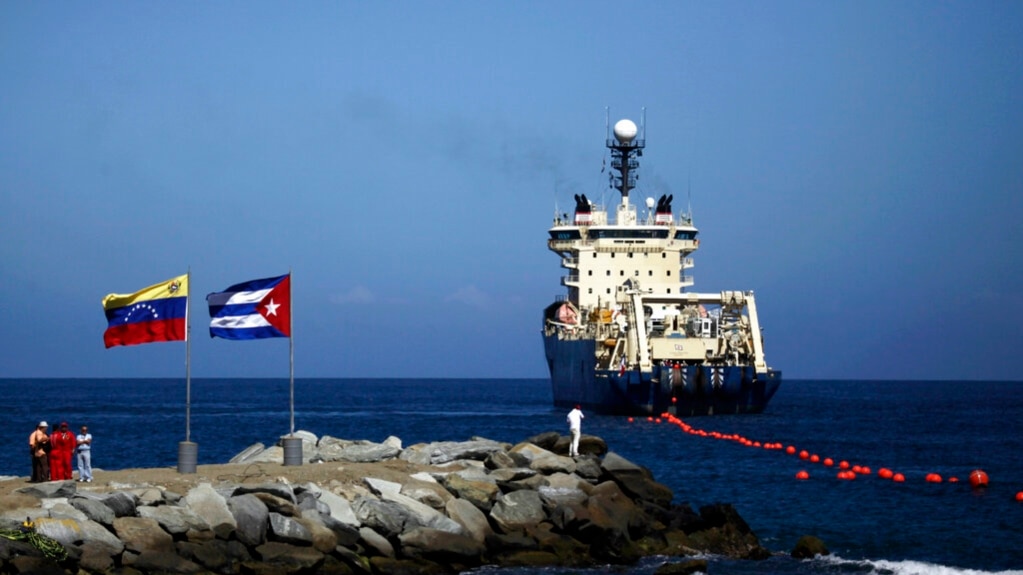Chinese companies are planning to build an undersea internet link to connect Asia, the Middle East and Europe, Reuters news agency reports.
Technology experts consider the planned $500 million project China’s attempt to compete with a similar effort led by American companies.
The Chinese project is known as EMA. It aims to create a huge network of high-speed internet cables on the ocean floor. Reuters reported that China’s HMN Tech is to build the network and put down the cable. HMN Tech would receive financial assistance from the Chinese government for the project, the news agency said.
Reuters reported that four people with direct knowledge of the plans confirmed the project. The individuals did not want to be named because they were not permitted to speak publicly about the plans.
China’s three main telecommunications carriers will help map out the operation. It is expected to be one of the world’s most modern and extensive undersea cable networks, the four individuals said. The proposed network would reportedly link Hong Kong to China’s island province of Hainan. It would then continue to Singapore, Pakistan, Saudi Arabia, Egypt and France.
Reuters said it contacted representatives from HMN Tech and the Chinese telecommunications companies. But none of them were willing to provide comments.
In a statement to Reuters, China’s foreign ministry said it "has always encouraged” Chinese companies “to carry out foreign investment and cooperation." The ministry did not provide any specific information about the reported Chinese-led project.
Undersea cables carry more than 95 percent of all international internet traffic. Such projects usually involve cooperation between many technology and telecommunications companies. The companies share their resources to build large networks to transport data quickly around the world.
Such networks are considered important to supporting economic and military operations for the companies and governments involved.
The undersea cable project is the latest technology competition between the United States and China. Experts say the China-led project aims to directly compete with another undersea cable currently being built by American company SubCom. That project, called SeaMeWe-6, will also connect Singapore to France, through Pakistan, Saudi Arabia, Egypt, and several other countries.
Reuters reported that the SeaMeWe-6 project at first involved China’s HMN Tech and the country’s major telecommunications companies. But a successful U.S. government pressure campaign resulted in the contract being given to SubCom last year.
The campaign included the U.S. giving millions of dollars in training assistance to foreign telecommunications companies in exchange for choosing SubCom over HMN Tech, Reuters reported.
The U.S. Commerce Department also put economic restrictions on HMN Tech in December 2021. The agency accused the company of seeking to secure American technology to help modernize China’s People’s Liberation Army. The restrictions made it impossible for owners of a Chinese-built cable network to sell internet connectivity to U.S. technology companies.
China Telecom and China Mobile withdrew from the project after SubCom won the contract last year. Then the carriers, along with China Unicom, began planning the cable to be built by HMN Tech, the four individuals told Reuters. The three Chinese telecom companies are state-owned. The companies are expected to own more than half of the new network. They are also making deals with foreign partners, the news agency reported.
SubCom chose not to comment on the competing cable. The U.S. Department of Justice oversees an interagency group that protects U.S. telecommunication networks from spying and attacks. The department also had no comment when contacted by Reuters.
Large undersea cable projects usually take at least three years to complete. The Chinese companies are hoping to complete contracts by the end of the year and have the EMA cable operational by the end of 2025, Reuters reported.
Telecommunications experts said one of the most important parts of the project will be establishing a new high-speed connection between Hong Kong, China and the rest of the world. The experts say the project will expand China’s state-supported telecommunications carriers. They also say the network will provide protection in case they are banned from developing U.S.-backed cables in the future.
One telecom executive working on the deal told Reuters about the competing cables, “It’s like each side is arming itself with bandwidth.”
I’m Bryan Lynn.

